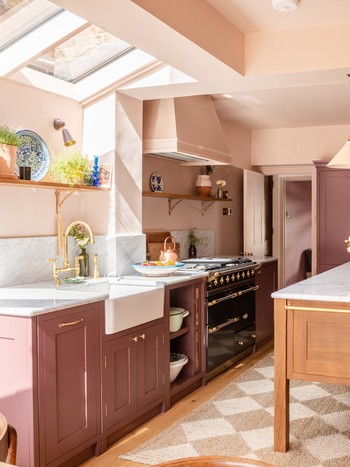Update Your Kitchen's Aesthetic with Costs Legs For Kitchen Island
Update Your Kitchen's Aesthetic with Costs Legs For Kitchen Island
Blog Article
Necessary Aspects to Think About When Choosing Legs For Kitchen Island
Picking the suitable legs for a cooking area island includes a mindful assessment of numerous factors that can dramatically influence both performance and visual charm. As we discover these elements, it ends up being clear that each choice can have far-ranging ramifications for the general cooking area experience.
Material Options
When picking legs for a kitchen island, comprehending the numerous product options is necessary for achieving both aesthetic allure and architectural honesty (Legs For Kitchen Island). The selection of product significantly affects not only the longevity of the island but also its total design and functionality
Steel legs, often made from stainless steel or wrought iron, contribute a commercial and modern-day feeling while making sure longevity and security. These products are resistant to wear and can support substantial weight, making them perfect for larger islands.
An additional option is engineered materials, like MDF or plywood, which can be more cost-effective while still supplying a series of coatings. Nevertheless, they may not provide the same degree of security as solid timber or steel. Products such as acrylic or glass can produce a contemporary appearance, though they may call for extra support to make certain security.
Ultimately, the option of material for kitchen island legs need to line up with the desired capability and the overall motif of the kitchen area.
Design And Style

When considering style, the shape and surface of the legs are important. Tapered legs can offer a sense of lightness and beauty, while thicker, a lot more durable legs can communicate stamina and security. Furthermore, the coating-- be it painted, discolored, or natural-- ought to complement the cabinetry and countertop materials to create a unified appearance.
In addition, the layout of the legs can additionally mirror individual taste. Customized or decorative legs, such as those featuring intricate makings or one-of-a-kind geometric forms, can serve as prime focus, adding personality and individuality to the kitchen area. Eventually, the best choice will certainly not just improve functionality yet also boost the visual charm, making the kitchen island a standout attribute of the home.
Elevation Considerations
Choosing the ideal elevation for kitchen island legs is crucial, as it straight affects both functionality and convenience. The common height for a cooking area island normally ranges from 36 to 42 inches, aligning with usual counter top elevations. A 36-inch height is ideal for food prep work and cooking, allowing for comfy use kitchen area appliances and devices. On the other hand, an elevation of 42 inches is commonly preferred for islands planned for bar seating, suiting taller stools and supplying a laid-back eating experience.

It is also necessary to make up individuals' heights and preferences. Tailoring the elevation can guarantee a comfy experience for all relative, making the cooking area island a much more practical and pleasurable room.
Weight Support
Ensuring ample weight support for cooking area island legs is crucial for both safety and capability. The kitchen island usually serves numerous functions, consisting of food preparation, eating, and extra storage space, requiring a durable assistance structure. When picking legs, it is important to take into consideration the general weight ability required based upon the island's intended use and the products that will read be put on it.
The choice of material for the legs plays a substantial role in their weight-bearing capacities. Solid wood, steel, and sturdy composites normally give exceptional toughness contrasted to lighter materials. Furthermore, the layout of the legs-- whether they are straight, tapered, or have a pedestal type-- can affect their capacity to distribute weight efficiently throughout the framework.
Moreover, the leg placement must be purposefully planned to enhance stability. Legs positioned at the edges or with a bigger base can much better support heavier tons. Constantly get in touch with the manufacturer's specifications relating to lots restrictions to ensure that the legs can maintain the desired weight without endangering safety and security. In recap, selecting cooking area island legs with ample weight support is crucial for creating a safe and practical culinary room.
Installment and Upkeep
Proper setup and maintenance of cooking area island legs are vital for ensuring long life and stability. This usually includes securing the legs to the island base utilizing appropriate bolts, ensuring that the legs are degree and aligned.
When installed, routine upkeep is needed to maintain the stability and look of the legs - Legs For Kitchen Island. For wooden legs, regular cleansing with a moist towel and application of suitable wood gloss news can avoid wetness damages and maintain their surface. Steel legs may need a mild cleaning option to remove grease and gunk, followed by a check my site dry fabric to avoid rust development
Furthermore, check the legs regularly for signs of wear or damage, such as fractures or loose joints. Tightening up screws or screws as required can additionally lengthen the life-span of the legs. By sticking to these installation and maintenance practices, property owners can guarantee that their kitchen area island stays tough and aesthetically appealing for several years ahead.
Final Thought

Visual comprehensibility is paramount in selecting the style and style of legs for a cooking area island, as these elements significantly affect the total setting of the space. Tapered legs can offer a sense of lightness and sophistication, while thicker, extra durable legs can convey strength and stability.Choosing the suitable height for kitchen area island legs is vital, as it straight influences both capability and convenience. In recap, picking kitchen island legs with adequate weight support is important for creating a functional and safe culinary space.
In conclusion, selecting legs for a kitchen island demands mindful factor to consider of numerous aspects, consisting of material options, style, elevation, weight assistance, and setup.
Report this page